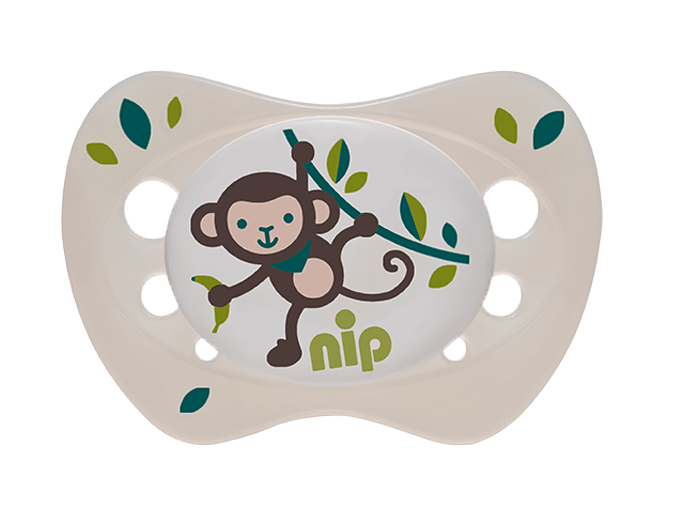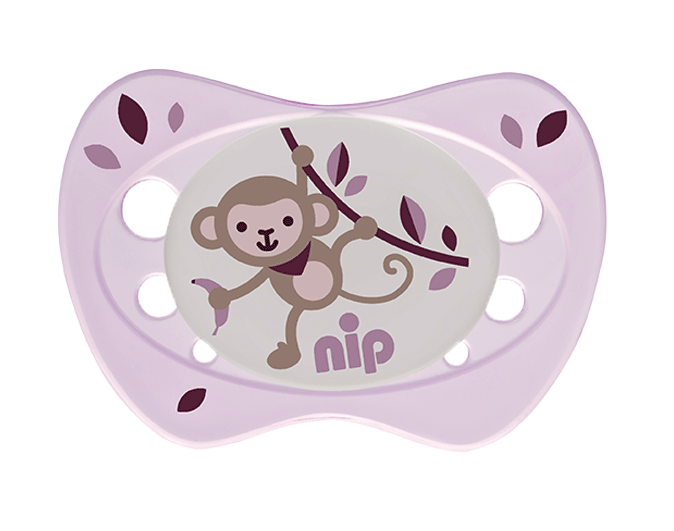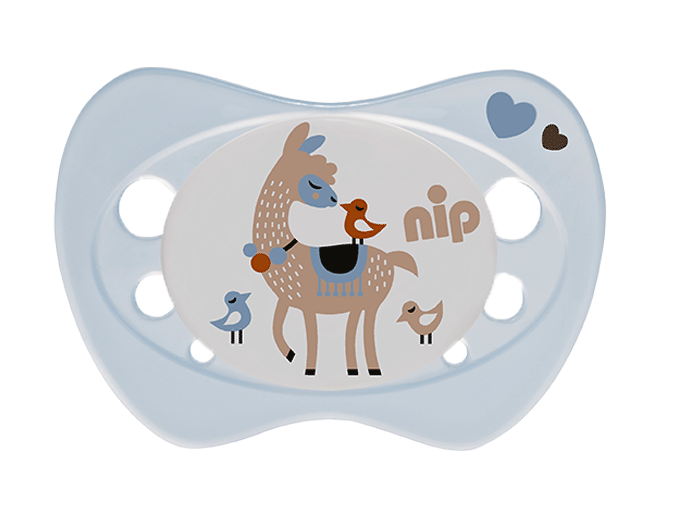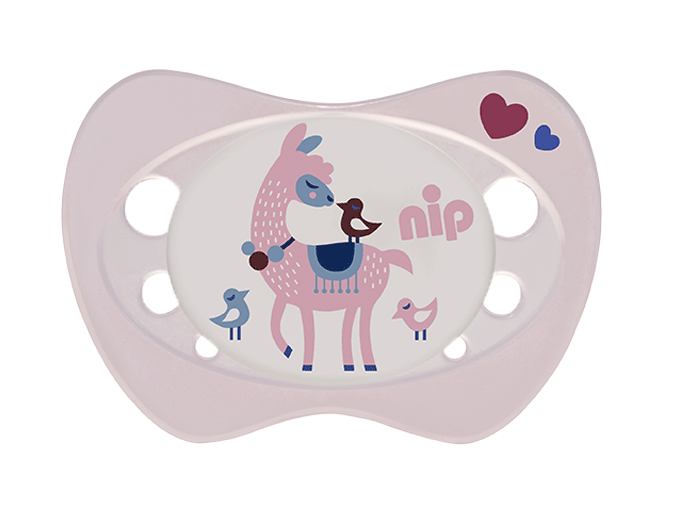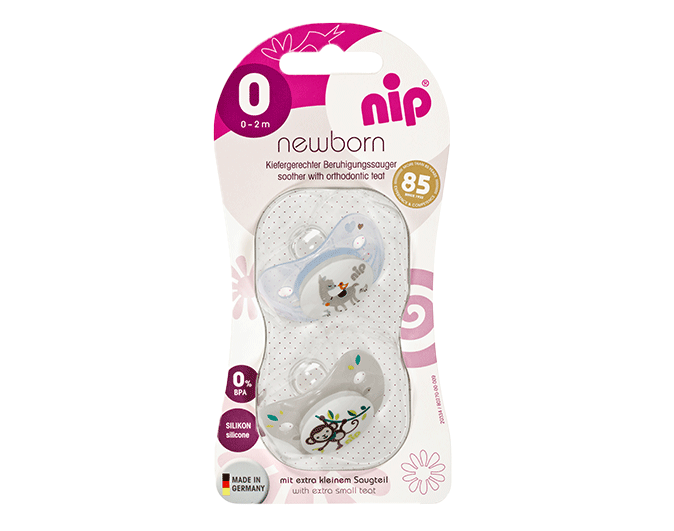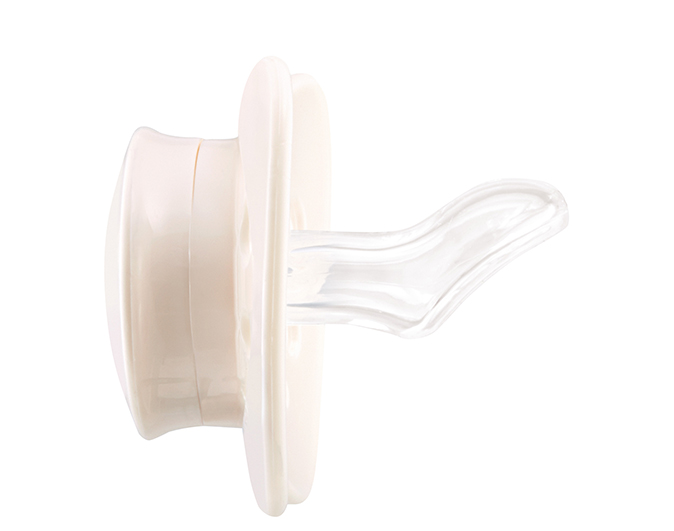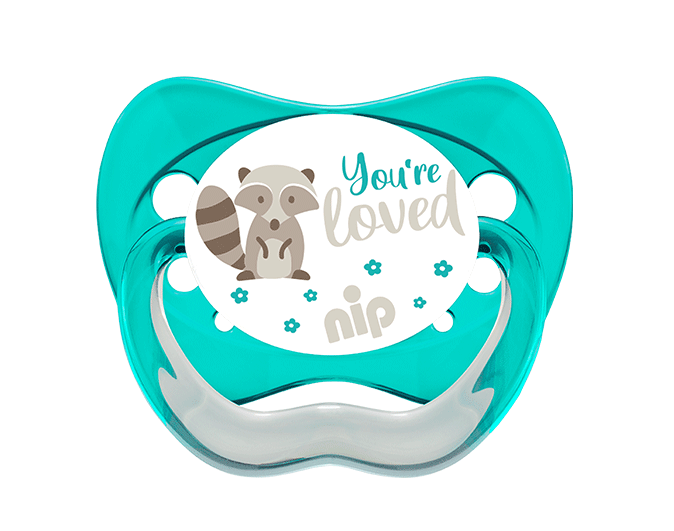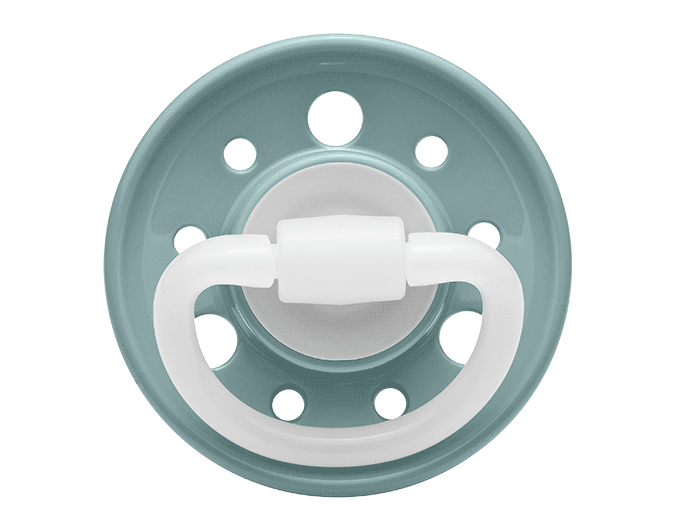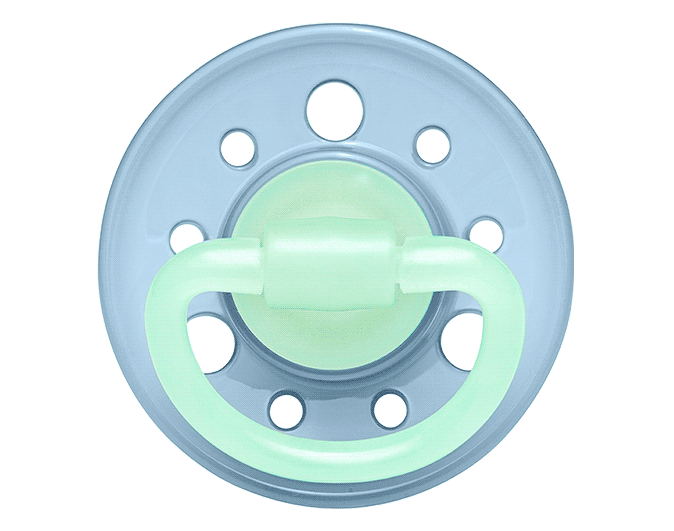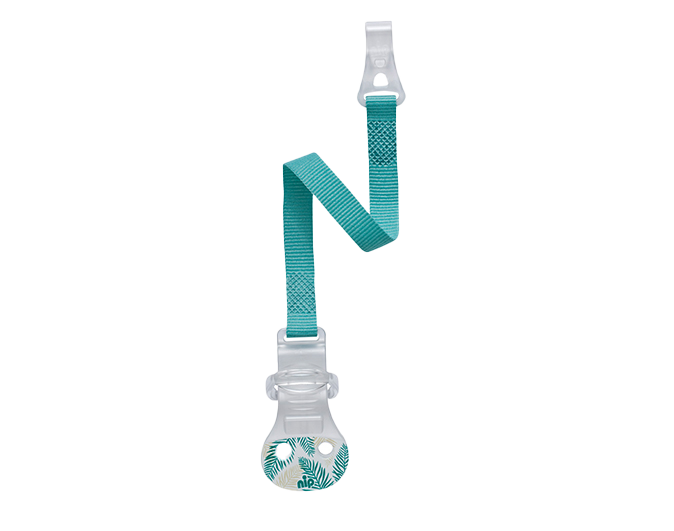Soother
Newborn Soother
- orthodontic shaped, soft teat made from siliconethat adapts perfectly to the sensitive palate in the first few weeks
- extra small disc for delicate facial proportions
- extra flat knob for comfortable sucking in any position
- chin protection prevents pressure points
- extra large ventialtion holes along the corners of the mouth provide optimal ventilation for baby's delicate skin
- four decent designs
- available in size 0 (0-2 months)
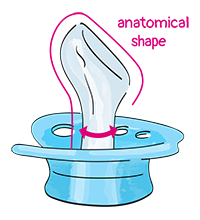
anatomical shape
The nip® Newborn soother has an extra small, anatomical shaped silicone teat. The thin shaft of the soother reduces pressure on the teeth and jaw areas and leaves enough space for the tongue. The natural, jaw-friendly shape adapts perfectly to the child's palate.
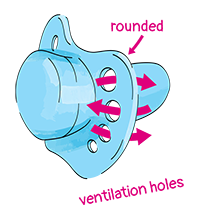
ventilation holes
Numerous ventilation holes in the edge of the disc allow plenty of air to reach the baby's sensitive skin
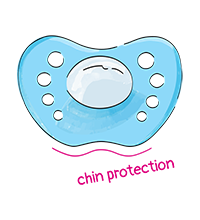
chin protection
The dummy disc is tailored to the mouth-nose-chin area and the rounded edge of the disc protects against pressure points
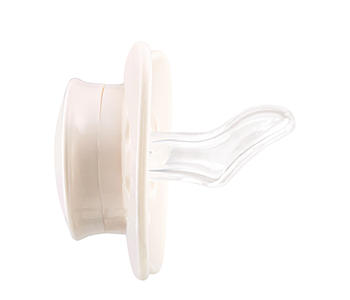
0-2 months
The Newborn soother is available in the teat size size 0-2 months

Silicone
...is a very durable, transparent plastic. It is not sensitive to light and heat. Silicone is hygienic and easy to clean but less resistant to pulling and biting than latex.
FAQs about soothers
How long can nip® soothers and teats be used for and how often should they be replaced?
For hygiene and safety reasons, you should replace soothers after one to two months. Always check them carefully before each use, especially if your child already has teeth. If you see any signs of damage, such as bite marks or any other defects, please throw the soother away immediately and replace it as necessary.
What is the difference between latex and silicone?
Latex is an amber-coloured natural substance and is extracted as a milky sap from the rubber tree. It is characterised by its special resilience, elasticity and extreme tensile and tear strength. Latex does not become statically charged and therefore does not attract dust or fluff. Silicone on the other hand is a transparent plastic. It is more durable than latex and undergoes less optical change over the period of use. However, it is less bite resistant, which is why latex is preferable for children who tend to bite hard on the teat.
Why do the age ranges for nip® soothers overlap?
The age ranges for nip® soothers overlap on purpose to make it easier for you to choose the right soother. Babies do not all grow at the same rate and therefore it doesn't always make sense to move up to the next soother size at precisely 6 or 18 months. If your baby is already big for his or her age at 5 months, for example, you can move up to a size 2 soother without any problems.
When using a soother, should I be worried about my child swallowing it?
Do not worry, your child can NOT swallow a nip® soother! Even though it could fit entirely inside the mouth, its shape makes it impossible for it to be swallowed. If your child does put the entire soother inside his or her mouth, please keep calm. The many nip ventilation holes will mean that your baby can continue to breathe so there is no reason to panic.
Carefully remove the soother as gently as possible from your child's mouth.
At what age should I wean my child off the soother?
There are no hard and definitive rules as to when you should wean your child off his or her soother. Most children will normally give up using a soother by their third year and only very few children continue using them until their fifth year. If your child cannot part with his or her soother or finds it very difficult, it is best to gradually wean him or her off it by the time he or she is 36 months old.
